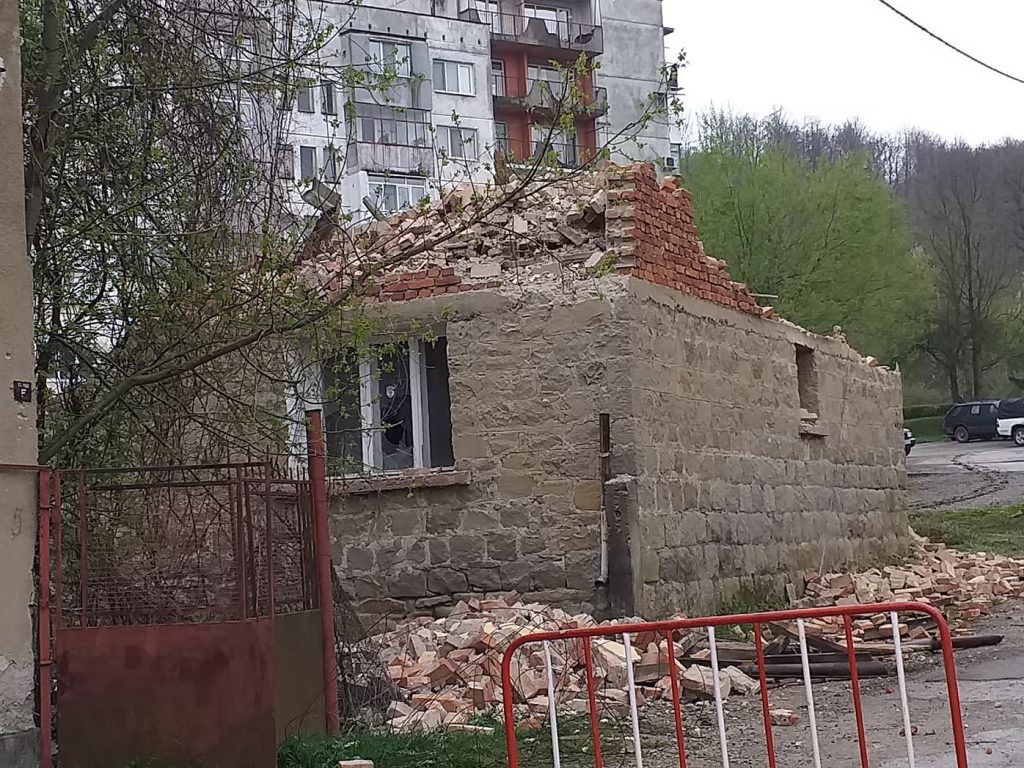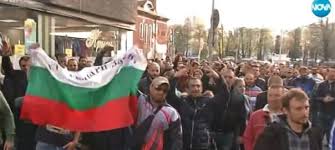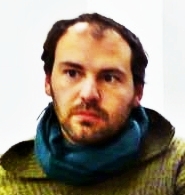
We are publishing this article in cooperation with the Serbo-Croatian web portal Bilten.
In the “Offenders in Gabrovo!” Facebook group, natives of the eponymous Central Bulgarian town comment upon all sorts of irregularities: they lambaste the owner of a car parked on the wrong side of the street, mobilize to replace a broken lamp post, ridicule the municipality’s failed street disinfection campaign, announce a lost set of keys, and criticize irregular public transportation. With more than 25 000 members, roughly half the town’s population, the group serves as a messy sort of a citizen’s assembly: calls for solidarity and sharp social critique are often times mixed with hate-inciting reports and public shaming. Before the last several weeks, Roma wouldn’t be discussed in “Offenders in Gabrovo!” more than reference to wrong parking. But then, on the evening of 7th of April 2019, a fight took place in a Gabrovo supermarket. Three Roma youngsters got into a quarrel with and beat a ethnic Bulgarian shopkeeper. The group then became the main coordination channel of some of the most violent anti-Roma protests in Bulgaria, that ended with burning and vandalizing Roma houses and the evacuation of their frightened dwellers.
Tensions grew after a local newspaper published the news that police released the attackers 24 hours after the fight. Footage from the supermarket’s security cameras that captures the fight was posted on youtube and started to spread virally. Hundreds came to the “Offenders in Gabrovo!” profile and discussed events, signed manifestos, and plotted actions and requests to authorities. Many posts reported merely sighting “gypsies” around town as a kind of self-evident insult: “We saw two of them at the crossroad. They looked so brazen!”, one report read. Other voices tried to calm things down, saying we shouldn’t mix up the “good” gypsies with the “bad” ones. Aware of the growing tensions in town, police arrested the Roma attackers again. Discussion in the “Offenders in Gabrovo!” group nevertheless steered towards making a symbolic sign, a demonstration to show indignation and anger at the inaction of the authorities. No one expected more than 10 people to actually turn up. Yet, thousands flooded Gabrovo’s main square. People felt sudden elation as they witnessed the strength of their numbers. Unexpectedly, they marched to the police station that held the Roma youngsters and tried storming the building, but were stopped by the special police forces on guard. Stones flew in the air, injuring several people. Then protesters dispersed and some of them went home. Others gathered into three big mobs that roamed the streets for more than four hours, attacking Roma houses along the way and filming their acts with mobile phones. “These aren’t the attackers’ houses, why are you smashing them?” voices could be heard asking on the videos. “They’re all the same, they’re all illegal.” other voices quickly retort. Young men and women shouted “Death to the Gypsies!”, throwing stones, smashing windows, vandalizing scant furniture. At that time, the houses were already empty. The Roma who lived there had seen and heard the mobs approaching and ran into the nearby forests, spending the night in hiding. The second night of protests brought more clashes with police, nine arrests, and two people injured. Some Roma families sent their children to sleep at their ethnic Bulgarian neighbor’s houses, afraid there would be more attacks. It took a week of heightened police presence to calm the protests down.
Equality on racist terms
Over the last decade, scenes like the ones above have been recurring around Bulgaria. Each year, a new locality would epitomize the ongoing low-intensity inter-ethnic conflict between Roma and ethnic Bulgarians – in Katunitsa in 2011, Gurmen and the Sofia neighborhood of Orlandovtsi in 2015, Radnevo in 2016, Asenovgrad in 2017, Voyvodinovo in 2018. Almost all cases started with relatively minor altercations – a drunken fight, a stone thrown at a window. But in the racially-biased lens of most mainstream and social media, such incidents acquire the status of a metaphor of the supposedly privileged position of Roma in Bulgarian society. One of the most deprived social groups, Roma are paradoxically perceived by many ethnic Bulgarians as privileged receivers of social assistance and rights, pampered by political elites at the expense of ordinary people who work and pay taxes. Rather than representing reality, such perceptions are a negative image of the real loss of rights and social protection Bulgarians experience in a context of a deepening neoliberal regime.
A variation of the same narrative incited the mass mobilization in Gabrovo as well. The town’s mayor Tanya Hristova (of the right-wing party GERB, in power in the Bulgaria in the last 10 years), the story went, would attract numerous Roma to town. She would provide them with (unregulated) housing, luring them with social benefits, turning a blind eye to any disrespect to public order in return for their disciplined vote at elections, and even more importantly – in return for counting them as inhabitants of the town: Gabrovo needed extra inhabitants so as not to lose its status of a regional capital due to its dwindling population.
Roma in Gabrovo amount to less than eight hundred, and thus are in no position to significantly affect demographics. Yet the popular theory described above doesn’t draw strength from accurate facts, but from a tension tangibly felt in town because of its depopulation. Since the beginning of transition in 1989, Gabrovo has lost about a third of its inhabitants, shrinking from around 80 000 to around 50 000. That process went along with the process of economic transformation: often named “Bulgaria’s Manchester”, Gabrovo has been a primary industrial center since the 19th century, developing textile, steel, and machine-building industries. The socialist period of 1944-1989 brought an expansion of mass production and weaving, textile, leather, telpher industries that provided life-long employment. The last 30 years marked a sharp economic decline with many of the key industrial facilities closing down and thousands of Gabrovo people resorting to labor migration elsewhere in Bulgaria and the EU.
Paradoxically, in the last 10 years, Gabrovo became a leading municipality in the absorption of European structural funds, outperforming bigger cities like the port town of Burgas and the capital Sofia. Yet, most of this outpouring of EU funds was invested in infrastructure renovation projects with no direct impact on the economic well-being of most inhabitants. Urban renewal would even exacerbate the feeling of personal decline shared by many people in town.

Themes of economic deprivation and inequality are inextricably linked to the discussions of the Roma on the pages of “Offenders in Gabrovo!”. “I don’t understand why on top of the gypsies in our town”, a comment reads, “authorities raised the prices of gas!”, “I hope this Roma problem will soon be solved.”, another one comments. “We have much more serious issues to handle.”, “I’m glad we stood up this time, but we should rebel like that against the exorbitant prices of heating!” another one says. Yet, expressed in racist terms, such indignation at deteriorating economic conditions inevitably tends towards a vision of punishment of the “privileged minority” and a negative equality via restriction: “Minority families without income should have their social assistance and child benefits cut.” Another comment on “Offenders in Gabrovo!” says. “Minority schools should have their bonuses cut. Everyone should pay their taxes and health insurance, and only receive money in return for real hard work. We should be equal, at the end!” concludes the commenter liked by 416 members of the group.
“Carrots are over, it’s now time for the stick!”
Since forming a government in 2015, GERB and its junior coalition partner, the extreme right-wing alliance “United Patriots,” have been increasingly legitimizing a public discourse on Roma as exploiters of the welfare system. Such discourses are also widely used by figures of the main opposition, the nominally-left-wing yet increasingly nationalist Bulgarian Socialist Party (BSP), and the liberal “Democratic Bulgaria” (None of them has in any way condemned the recent pogroms). MPs and ministers also use punishing and racialized ideas of equality like the ones expressed above to justify introducing ever more restrictive welfare polices of cutting the amount of social benefits, making them harder to obtain, linking them to disciplinary requirements like school attendance or performing mandatory labor.
The government’s restrictive turn was once more demonstrated in the days after the fight, when it sent Tomislav Donchev, a deputy PM and former Gabrovo mayor, to supposedly pacify the situation. “People’s anger is justified,” Donchev addressed the protesting crowds. “Some social groups feel they’ve more rights than the rest, abusing the welfare system”. His wife’s viral facebook comment furthered his thoughts: “For gypsies carrots are over, it’s time now for the stick!”. “For months”, PM Boyko Borisov added in a self-critical air, “we’ve tolerated the free movement of minorities and harassment of people around town.” Defense Minister and United Patriots leader Krasimir Karakachanov proposed a comprehensive “Concept paper against gysification.” GERB and its allies were eager and quickly reacted to Gabrovo events, as they turned attention away from the ongoing Apartmentgate scandal. The scandal forced some of the first figures in their parties to resign after media exposed that they’d bought luxury flats at below market prices. It ate away GERB’s lead in polls just ahead of European Elections on the 26th of May, placing them now second after BSP.
In Gabrovo, as with previous cases over the last decade, authorities resorted to demolishing unregulated Roma houses, effectively evicting some of the Roma inhabitants out of town. They also ordered increased police searches of spots where “a higher number of Roma and criminals was reported.” Ironically, events in Gabrovo highlighted another role of the Roma, quite different than the one of “privileged idlers” that nationalist politicians and commentators prefer to ascribe to them. In the days after the pogroms, Gabrovo faced a cleaning crisis – most people working as municipal cleaners turned out to be Roma too scared to show up to work. Many school classes remained half-empty because Roma parents were afraid to send their children to school.
Both the openly anti-Roma discourses and restrictive policies of the government had other, more lasting effects on the Roma communities. New Roma protest mobilization platforms have recently emerged, such as the Committee of the Roma in EU (mobilizing Bulgarian and Balkan Roma migrants in Netherlands, Belgium and Germany) and the Roma Standing Conference (collecting signatures in support of its Manifesto against demolitions and forced evictions), which are doing effective grass-roots organizing on a level unseen before.
But a bigger question remains. This is whether it is possible to disentangle the mix between racism and critique of inequality among ethnic Bulgarians that fired the Gabrovo protests. It will be a difficult task, after decades of concerted political efforts aiming at the opposite direction. As I write this article, a new conflict between Roma and ethnic Bulgarians in Kuklen village (over playing loud music) is elevated by the media to the status of a metaphor of Romani impunity. It’s clear that to further common struggles for a more equal Bulgarian society, we must demystify the false narratives of supposed Roma privilege and tirelessly point at the neoliberal policies of restriction and repression at play behind them.
Stefan Krastev is a Bulgarian sociologist and anthropologist interested in Roma, ethnic minorities, urban marginality, racism, and financialization.


